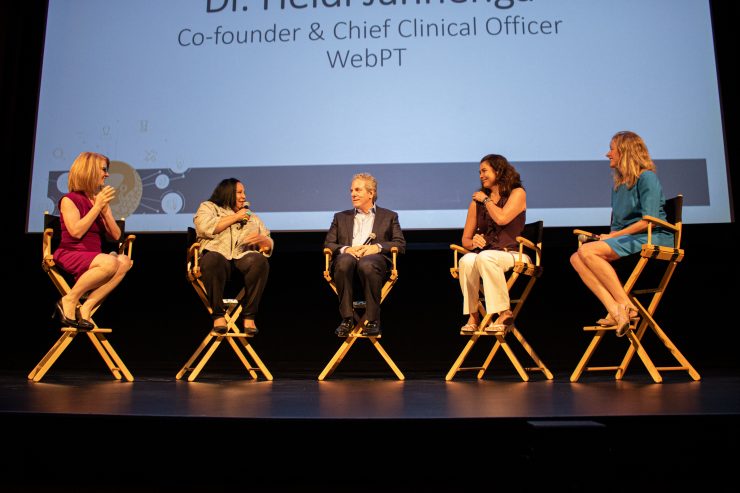Working to grow Arizona’s STEM ecosystem was the overarching theme that dominated the 2019 Arizona STEM & Innovation Summit, held on Sept. 17 in Scottsdale. The event attracted an estimated 1,000 individuals to the Scottsdale Performing Arts Center, including students, teachers, and members of Arizona’s business and government communities.
This year’s summit marked the ninth time the SciTech Institute – an Arizona-based organization that organizes a wide variety of STEM-related programming and opportunities – has held the event in the Valley. One of the summit’s main goals is to build connections across industries and occupational sectors to help strengthen Arizona’s STEM ecosystem, according to Dr. Jeremy Babendure, Executive Director of the SciTech Institute.
“This conference is an opportunity to convene all of these different partnerships, programs, businesses and government institutions together,” he said. “If we view STEM as a core component of what future society is going to be in Arizona, it really pervades the whole workforce continuum.”
The Arizona STEM & Innovation Summit included over fifty STEM-related sessions, including workshops, interactive panels, and keynote speakers. Topics covered a wide range, from how to build and maintain quality STEM programming at a K-12 level, to how teachers can integrate real-world industries like agriculture and robotics into their curriculum.
The conference also included over 65 hands-on exhibits; students attending the event had opportunities to experiment in virtual reality, interact with animals, check out a solar-powered go-kart, and more. Many of the students attending the event were wearing colorful polos identifying them as Chief Science Officers – SciTech Institute-affiliated student ambassadors who are heavily involved in STEM programs at their schools.
The event kicked off with a keynote address, in which Scottsdale Mayor Jim Lane began by reading an official proclamation designating September 17 as Arizona STEM Summit & Innovation Day in the City of Scottsdale. Lane described the event as “one of the leading STEM conferences in the country.”
“The tech industry creates hundreds of thousands of jobs here in Scottsdale, as well as throughout the state, providing social and economic benefits for all residents,” he said. “The summit nourishes the growth and development of Arizona’s STEM ecosystem, connecting industry, educators, and innovators.”
Following the announcement was a panel discussion hosted by Dr. Babendure and Dr. Steve Seleznow, president and CEO of the Arizona Community Foundation, about the importance of building Arizona’s STEM ecosystem. Participating in the panel was Arizona Senator Heather Carter, Arizona Science Center president & CEO Chevy Humphrey, WebPT co-founder Dr. Heidi Jannenga, and Avondale Elementary School District superintendent Dr. Betsy Hargrove.
“STEM is ubiquitous with every single job that we have,” Sen. Carter said. “We need to make sure that we are preparing the next generation of workforce to be able to work in that field.”
A key aspect of building that workforce, Humphrey said, is developing new resources and systems that allow communities in need of assistance to build STEM opportunities for students to connect with other organizations that may be able to help.
“We have a lot of really smart people in this room, and I think collectively, if we come together and we talk about it, and we figure out what is that system… [Arizona] can actually be the leader in the STEM ecosystem,” she said.
Arizona is already a booming market when it comes to tech-related jobs. Global technology company Infosys, which announced last fall it would bring over a thousand jobs to Arizona, just opened its new facility at ASU SkySong earlier this month. Other companies that have made recent announcements include Microsoft, Verdigris Holdings, and CAVU Aerospace. SciTech Institute says Arizona is already home to over 130,000 tech jobs.
Babendure said in a statement that he hopes the summit will continue to have a positive impact on Arizona’s STEM ecosystem.
“The idea really is to spur excitement, to kickstart important discussions and to ultimately connect those students with STEM opportunities,” he said. “It’s truly a unique opportunity to inspire future STEM innovators.”





















Add comment